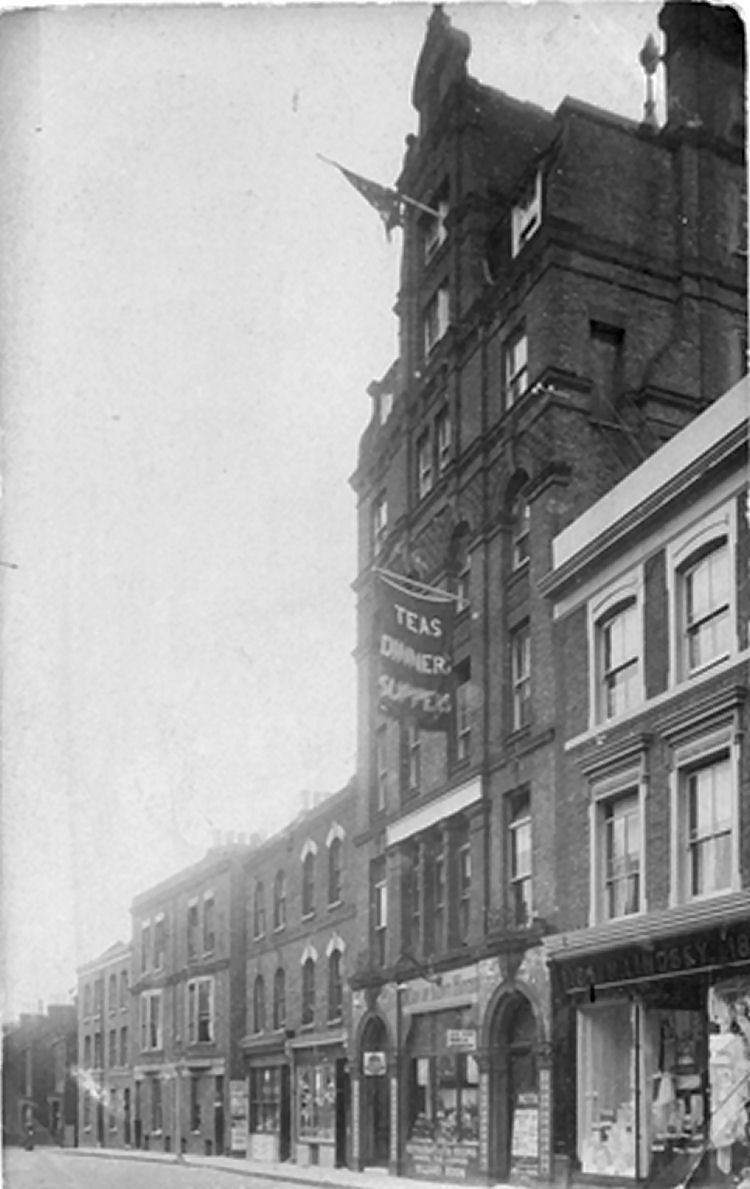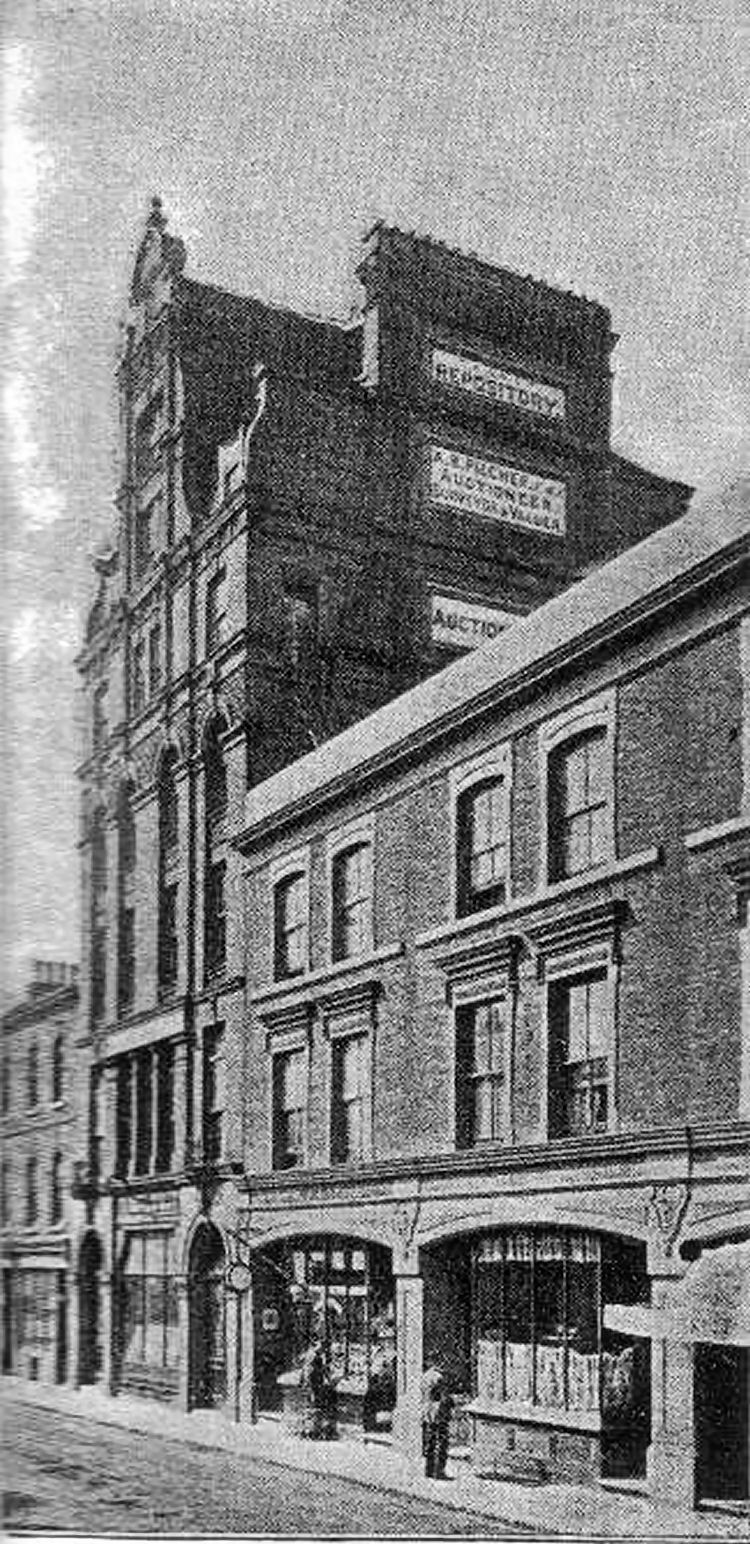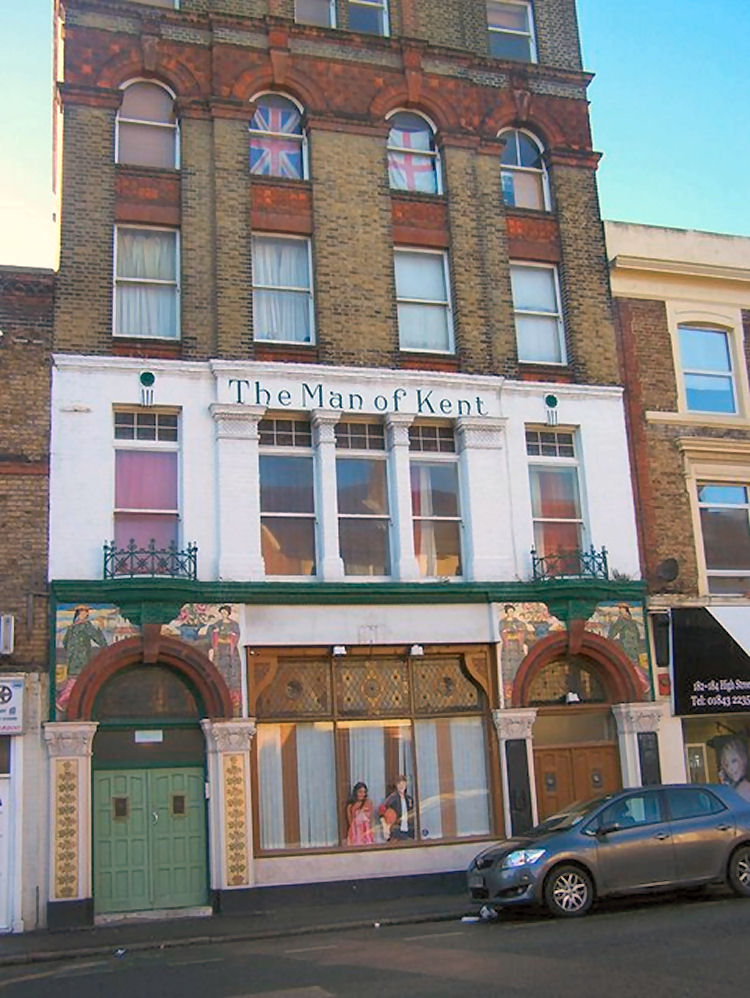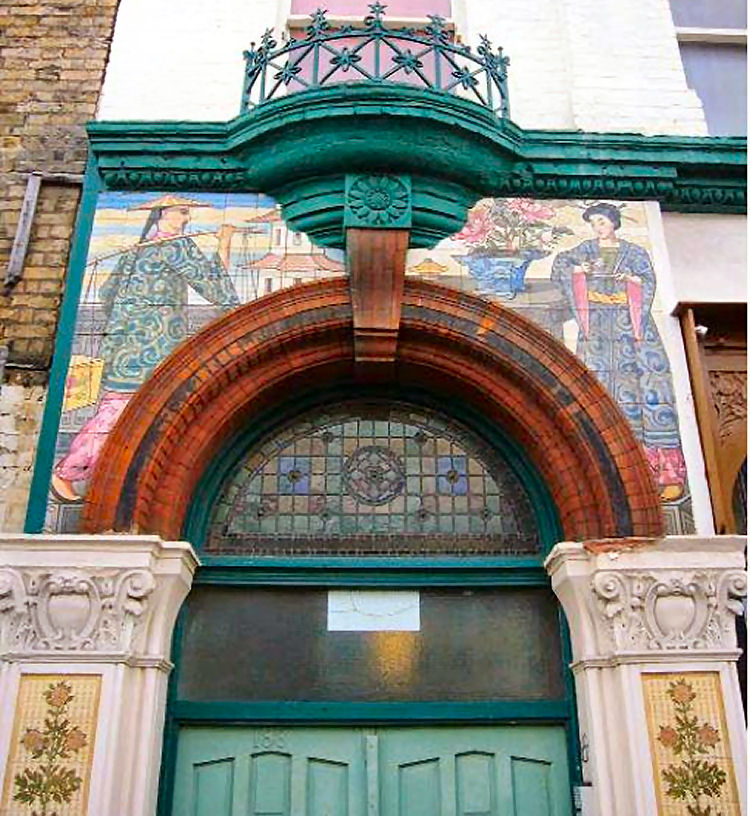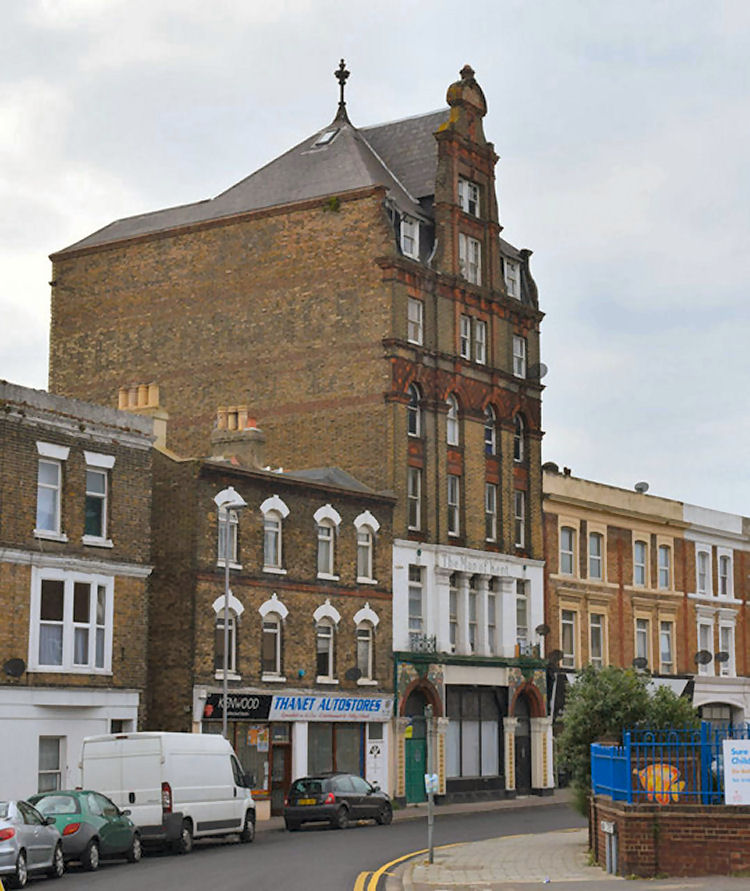Sort file:- Margate, March, 2021. |
|||||||||
Page Updated:- Sunday, 07 March, 2021. |
|||||||||
| PUB LIST | PUBLIC HOUSES | Paul Skelton | |||||||
|
Earliest 1883 |
Man of Kent |
Latest???? (Name to) |
|||||||
|
186 High Street Margate
This was a hotel that I know to have been operating in the High Street in 1922. I believe it was operating as a Temperance Hotel, so never had a drinks license, but I'm including it in this town all the same. The building gained a Grade 2 listing on 5 November 2010. One time also known as "Burke's" and by 2009 it was operating as "Milo's Family Bar"
Built as a coffee tavern, the "Man of Kent" first appears in a Margate directory in 1883. The following year it is listed under the slightly grander name of "Man of Kent Temperance Hotel". However, by 1895, the building was no longer in a temperance related use, and had many subsequent commercial, and residential, occupants. It had 28 bedrooms with commercial dining rooms, By the 1890's it had fallen out of favour and the lower half was occupied by the Thanet Furniture repository and auctioneers run by Alonzo Bilham Pilcher, once Mayor of Margate and also registrar of births deaths and marriages. The upper floors were used by Clarke and Co, Printers, who published the Margate and Cliftonville Express and Thanet Times. For most of the 20th century it has at various times been The Man of Kent Coffee tavern, furnished rooms, a shop, a restaurant and even more recently a bar. Listing for the building is currently going ahead. The concept of temperance emerged in Britain in late 1820s, with the first temperance society to be founded in England being set up in Bradford in 1830. Initially the Temperance Movement just opposed the consumption of spirits, and otherwise condoned drinking in moderation; however, by the late 1830s, the movement had become more vehement in its condemnation of alcohol, and societies began only to accept total abstinence. This, in turn, led to the need for buildings in which societies could meet for social and educational gatherings and where entertainment, improving activities and refreshment could be provided in a teetotal environment. Various building types emerged as a result of this: temperance halls, temperance hotels, and coffee houses or taverns offered a variety of facilities, and often their functions over-lapped. Reading rooms, libraries, dining rooms, games rooms, a bar selling non-alcoholic drinks, and overnight accommodation, might have been found at any of these establishments. The term 'hotel' may have indicated that rooms were available for the teetotal traveller; however, it was also used to describe more upmarket coffee houses. Coffee taverns frequently sought to take on the appearance of pubs in an attempt to seem a credible alternative to such establishments. Examples such as the "Man of Kent" mimic the flamboyance of the late Victorian 'gin-palaces', using coloured glass, terracotta and tile-work to elaborate effect. The tile-work at the "Man of Kent" is believed to have been made by Maw and Co, one of the principal tile manufacturers of the late 19th century. The floral tiles appear in Maw and Co catalogues of the 1880s, and it is believed that the figurative tiles were designed by Owen Gibbons, a ceramic designer who assisted on the interior schemes for the Victoria and Albert Museum, Kensington, London, before becoming Headmaster of Coalbrookdale School of Art, Shropshire. He also worked as a freelance designer for Maw and Co, and was responsible for designing a number of small tile panels which featured Japanese ladies in traditional dress. These are illustrated in Maw and Co catalogues of the 1880s. Coffee taverns sold a wide variety of non-alcoholic beverages, and tea would have been a popular option. China and Japan were culturally and economically associated with tea and were also considered places of great exoticism; Japanese art was having a particular influence on English and French art of this period. The Japanese lady who features in the tiles is making and drinking tea; over the left-hand door she holds a small jug on a tray, and over the right-hand door she holds a teacup and saucer. The Chinese man, who is an exact mirror image over the two doors, is perhaps a vendor, as he carries tea chests on a bamboo yoke. The subject matter of these tiles provides rich and visually exciting decoration, as well as artistically superior advertising. The way in which the imagery is cropped is reminiscent of traditional Japanese prints. Whether or not these panels were unique to this building, they are extremely unusual in their combination of size, subject matter, quality of design and level of survival. The rose and jardinière tiles on the pilasters around the left-hand door, are a standard design which appeared in the Maw and Co catalogue of the 1880s, nevertheless, they are the only know extant example of this particular design, and survive with a good level of preservation.
LICENSEE LIST Unoccupied 1881+ DUNTHORNE Robert 1890+ (Temperance Hotel) Unoccupied 1901+
|
|||||||||
|
If anyone should have any further information, or indeed any pictures or photographs of the above licensed premises, please email:-
|
|||||||||
| TOP |
|
|
|||||||
